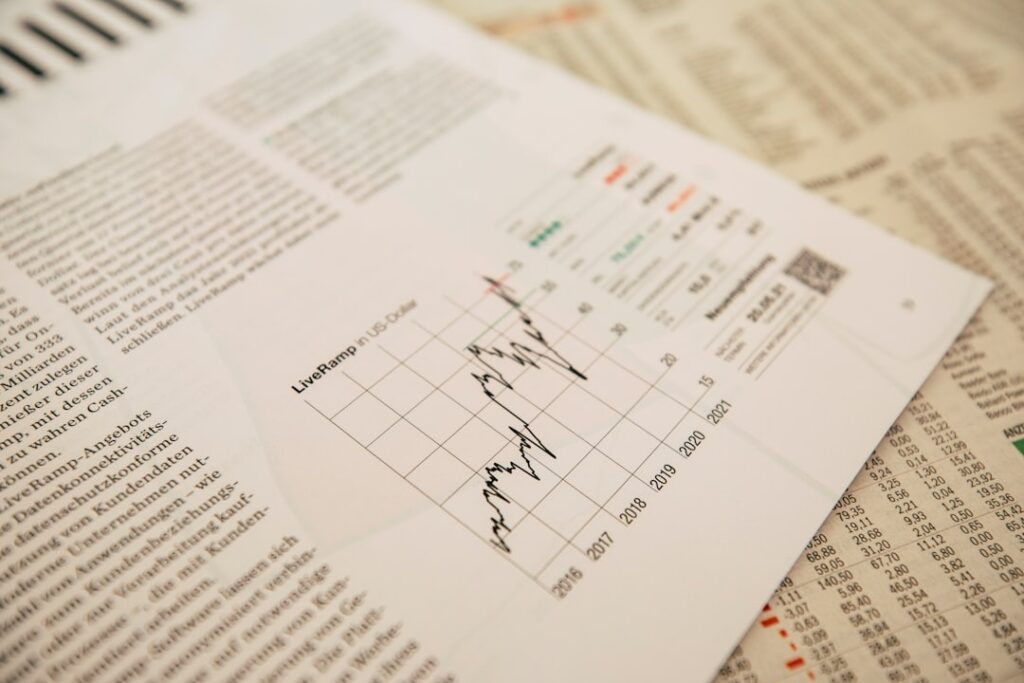Understanding the Economic Outlook for 2025: What Investors Need to Know
As the global economy continues to evolve, investors must stay informed about the shifting landscape to maximize their returns. The economic outlook for 2025 is filled with both challenges and opportunities that will shape investment strategies across the world. With factors like geopolitical uncertainty, inflation, technology advancements, and climate change influencing global markets, it is essential to understand how these dynamics will affect investment decisions.

What You Need to Know About Economic Outlook for 2025?
The economic outlook for 2025 is shaped by a combination of long-term trends and short-term disruptions. While the global economy has made significant strides in recovering from the COVID-19 pandemic, new challenges have emerged that could impact growth in the coming years. Key factors influencing the 2025 economic outlook include:
- Inflationary Pressures: As central banks continue to adjust interest rates, inflation remains a key concern for economies worldwide. Inflationary pressures could affect purchasing power, interest rates, and overall market stability.
- Technological Innovation: The rise of AI, blockchain, and other technological advancements will continue to drive changes in industries such as finance, healthcare, and manufacturing. These innovations may open up new investment opportunities while disrupting traditional sectors.
- Geopolitical Uncertainty: Political instability, trade tensions, and global conflicts will continue to create uncertainty in the markets. Geopolitical factors will remain a significant influence on the economic outlook in 2025.
- Climate Change: As climate change accelerates, governments and corporations are increasingly focusing on sustainability. Green technologies, renewable energy, and climate-resilient infrastructure will become key drivers of future growth.
Understanding how these factors will interact will provide investors with the necessary insights to navigate the evolving economic outlook and make informed decisions.

Key Trends That are Shaping the Economic Outlook in the Current Year
1. Post-Pandemic Recovery and Growth
The global economy has made impressive strides in its recovery following the pandemic, but the post-pandemic environment still poses unique challenges. While many sectors have rebounded, others—such as travel, hospitality, and certain retail sectors—continue to struggle with volatility. In 2025, the continued recovery is expected to be uneven, with some regions experiencing faster growth than others.
For investors, this means that sector and regional diversification will become even more important. Emerging markets may offer higher growth potential, while developed economies may see more moderate expansion. The economic outlook suggests that investors should focus on sectors with long-term growth potential, such as technology, healthcare, and green energy.
2. The Rise of Green Technologies and Sustainable Investment
Climate change is one of the most significant global challenges, and in 2025, it will continue to shape the economic outlook. Governments, businesses, and consumers are increasingly focused on sustainability, driving the rise of green technologies and sustainable investing. Clean energy, electric vehicles, and carbon-neutral technologies are expected to dominate investment discussions in the coming years.
For investors, this shift toward sustainability presents opportunities to support companies and sectors that align with environmental, social, and governance (ESG) criteria. Sustainable investments are becoming more attractive not only for their ethical appeal but also for their potential to deliver strong returns. By aligning their portfolios with the growing demand for green technologies, investors can tap into one of the most significant trends of the next decade.

3. Technological Innovation: The Rise of Artificial Intelligence and Automation
Technological advancements will play a central role in shaping the economic outlook for 2025. Artificial intelligence (AI), machine learning, and automation are expected to transform industries, creating both opportunities and disruptions. From finance to healthcare, these technologies are driving efficiencies and unlocking new business models.
Investors should pay close attention to industries at the forefront of technological innovation, such as AI development, cybersecurity, and blockchain. Tech stocks, along with ETFs and mutual funds focusing on cutting-edge industries, could offer attractive growth opportunities as these sectors expand.
However, technological disruption may also negatively impact traditional industries, particularly those that rely on human labor or legacy business models. For example, automation in manufacturing and logistics could lead to job losses in certain sectors. Thus, it is essential for investors to be mindful of how technological changes may affect different industries and asset classes.
4. Inflation and Central Bank Policies
Inflation continues to be a key concern for investors as it erodes purchasing power and influences interest rates. In 2025, many central banks will likely continue to adjust their monetary policies in response to inflationary pressures. In the United States, Europe, and other major economies, interest rates may rise, which could slow down economic growth but help control inflation.
Higher interest rates often lead to lower bond prices and can reduce the attractiveness of equities, particularly in interest-sensitive sectors such as real estate and utilities. However, rising interest rates can benefit certain asset classes, such as short-term bonds and inflation-protected securities, making them attractive to investors seeking to hedge against inflation.
Investors should consider adjusting their portfolios to account for potential inflationary impacts, including allocating more to inflation-resistant assets like gold, Treasury Inflation-Protected Securities (TIPS), and real estate.
5. Geopolitical Tensions and Global Trade
Geopolitical instability is likely to remain a key factor affecting the economic outlook for 2025. Trade tensions, particularly between major powers like the U.S. and China, could create volatility in global markets. Additionally, regional conflicts and shifts in trade alliances could disrupt supply chains and influence commodity prices.
Investors should diversify their portfolios to protect against geopolitical risks. Investing in international markets, hedging with foreign exchange (forex) options, and considering commodities like oil and precious metals can help manage exposure to geopolitical uncertainty.
In addition, sectors such as defense, infrastructure, and cybersecurity may benefit from increased government spending in response to geopolitical threats. These industries could offer attractive investment opportunities in a period of heightened geopolitical tension.
6. Aging Populations and Healthcare Demand
The aging population in many developed countries is driving increased demand for healthcare and senior services. By 2025, this demographic shift is expected to have a profound impact on the global future. Healthcare spending is projected to rise significantly, and companies focused on elder care, pharmaceuticals, biotechnology, and healthcare technology could see robust growth.
For investors, healthcare is an important sector to watch in the coming years. Stocks in companies providing medical devices, pharmaceuticals, and long-term care services are expected to outperform as demand for these services increases. Additionally, healthcare REITs (real estate investment trusts) focused on medical facilities may offer attractive returns as the demand for healthcare infrastructure grows.

Key Strategies Investors Should Learn About
1. Diversify Across Sectors and Geographies
Given the potential volatility and uncertainties in the future of economy, diversification remains one of the most effective strategies for managing risk and optimizing returns. A well-diversified portfolio that includes exposure to a range of asset classes—such as stocks, bonds, real estate, and commodities—can help investors weather economic fluctuations.
Additionally, investors should consider diversifying geographically, including both developed and emerging markets. While developed economies may offer stability, emerging markets present higher growth potential. Allocating investments across different regions and sectors ensures that investors are better positioned to capitalize on global economic trends.
2. Embrace Sustainable and Impact Investing
As the global economy shifts toward sustainability, investors should consider incorporating ESG (Environmental, Social, and Governance) factors into their investment strategies. Green energy, clean technologies, and sustainable agriculture are sectors expected to thrive in the coming years, presenting opportunities for long-term growth.
Investors should seek out companies with strong sustainability credentials and align their portfolios with their values. Impact investing, which aims to generate both financial returns and positive social or environmental outcomes, is gaining traction and can offer both ethical and financial benefits.
3. Stay Informed About Central Bank Policies
Central bank policies will have a significant impact on the financial future for 2025, particularly when it comes to interest rates and inflation. Investors should stay informed about central bank decisions and adjust their portfolios accordingly. For example, if interest rates rise, bond prices may fall, so investors may want to consider shifting to short-duration bonds or other inflation-hedged assets.
Keeping a close eye on global economic indicators and central bank communications will help investors make more informed decisions about when to buy or sell specific assets.
4. Focus on Long-Term Growth Sectors
Despite short-term economic challenges, sectors with long-term growth potential—such as technology, healthcare, and renewable energy—offer compelling opportunities. Investing in these industries, which are expected to experience significant expansion in the coming years, can help investors capitalize on major economic trends.
By focusing on innovation and industries poised for growth, investors can build portfolios that stand the test of time.


Plan for the Future with Justis Capital
At Justis Capital, we understand the importance of staying ahead of the curve in an ever-evolving global economy. Our team of experts can help you navigate the complexities of future economy in 2025 and beyond, creating customized investment strategies that align with your financial goals. Whether you’re looking to diversify your portfolio, explore sustainable investing, or plan for the future, Justis Capital is here to provide the insights and support you need.
Discover Comprehensive Solutions with Justis Capital
At Justis Capital, we offer a range of services designed to empower entrepreneurs and investors like you to thrive in the global market. Here’s how we can help:

Citizenship by Investment
Unlock new opportunities with our expert guidance on obtaining second citizenship through investment programs, offering greater mobility and access to global markets.

Wealth Management
Safeguard and grow your wealth with tailored strategies from our experienced wealth management team, focused on long-term financial success.

Crypto Portfolio Advisory
Maximize your returns with personalized advice on building and managing a crypto portfolio, leveraging our in-depth knowledge of blockchain and digital assets.
